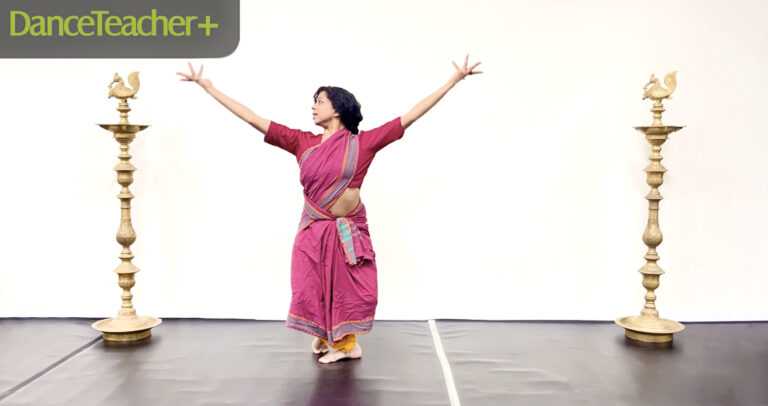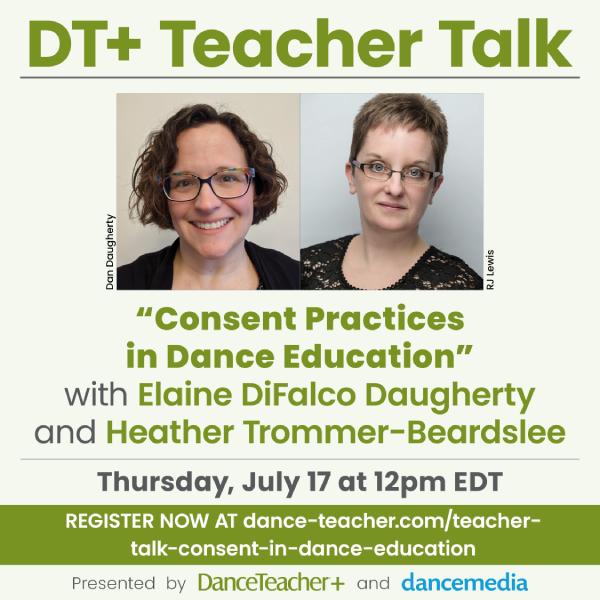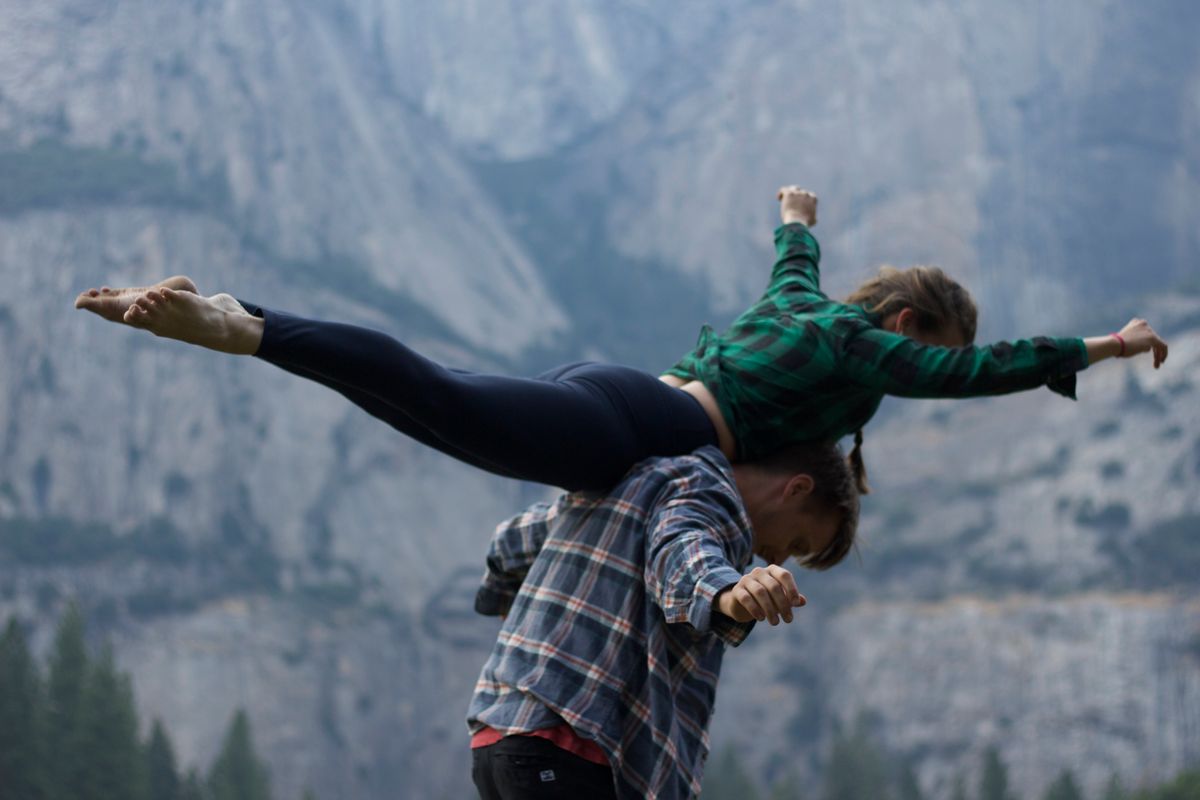
For Colette Krogol and Matt Reeves, artistic directors of Orange Grove Dance and adjunct professors at George Washington University, cooking dinner each night is an extension of their collaborative, creative partnership. While the married couple uses this time to unwind from their busy lives, the conversation often returns to their work together, whether it be their newest project, most recent class or simply items left lingering on the to-do list. “Matt anchors it by cooking main courses, and I’m swirling around figuring out side dishes, condiments, drinks and feeding the dog,” says Krogol. “Come to think of it, this anchor and swirling connects to many points in our lives in regards to our dancing, creative process, administrative tasks, chores…even our social life.”
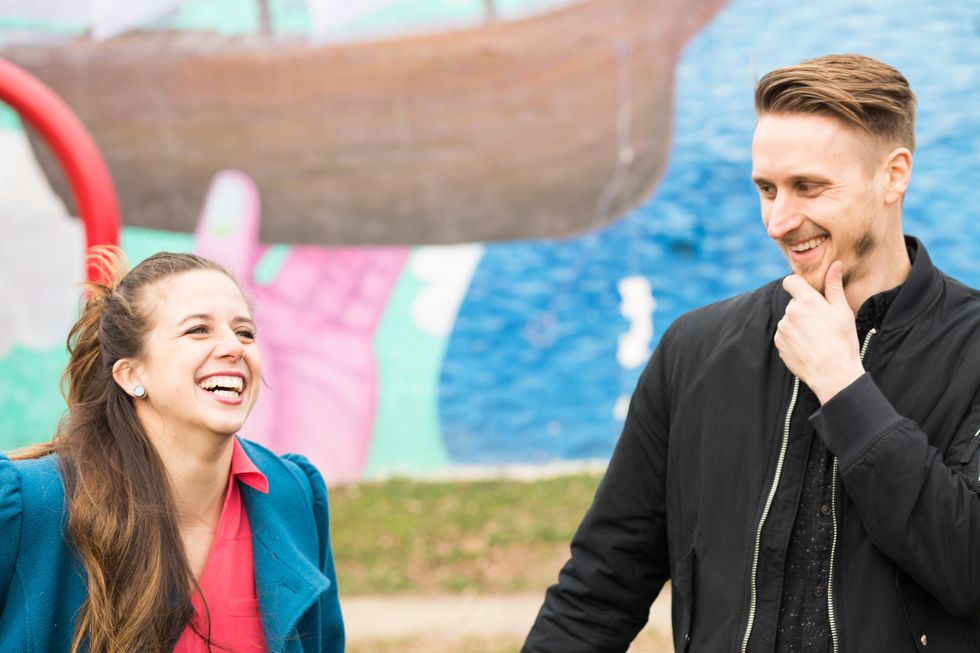
Photo by Jonathan Hsu, courtesy of OGD
Between teaching, making dances, directing a company and producing multimedia shows—plus all of the minute tasks each of those jobs entails—how do they stay present for each other, much less find time to cook? “We are fortunate because we are able to problem-solve together and share artistic burdens and stresses,” says Reeves. “When one of us comes home exhausted, the other person understands.”
After a decade together as a couple, skills they initially attributed to one another now feel like an extension of self. Each new work they build, and every class they teach, becomes part of a bigger investigation that is their life together. “There is something very idealistic about creating with someone who is your partner in love and life,” says their longtime collaborator, Mark Costello. “It is often said the pinnacle of being an artist is ‘living your art,’ for better or worse. And in that sense, I find Matt and Colette’s relationship to be something to strive toward.”
Krogol and Reeves met as freshmen in the dance program of University of Florida in Gainesville. Both are from Florida, but their dance backgrounds could not have been more different. Krogol trained in a more traditional conservatory-style setting at New World School of the Arts, and Reeves came from musical theater and athletics. Yet, almost immediately they were attracted to each other’s vastly different approaches. “Our movement preferences are so different,” says Reeves. “I always look for diving and falling and throwing weight, and she has precision. She helps us to clean and find shapes, while I can emphasize a feeling.”

Photo by Geoff Sheil, courtesy of OGD
By sophomore year, they had decided to create a duet. “We had no idea how to start,” says Krogol. They began by making lists of words, opposites and options—”this or that, Coke or Pepsi”—and simply alternating the steps each made. They experimented with taking on each other’s natural rhythm, a fascinating gambit, since Reeves is nearly a foot taller.
The work in the studio allowed them to grow as friends and become intimate as collaborators. Things didn’t take a romantic turn until their senior year, when they returned to campus after a summer spent in different cities. “I called her, or maybe she called me,” says Reeves, “and we never stopped hanging out. That year was a big leap forward for us.”
After graduation, the two moved to New York City, and as the work they were doing together began to get produced, it seemed to demand a name. Hailing from different parts of Florida, their reference points to home were different. “But we both had a connection to orange groves,” says Reeves, “and wanted to convey a blue-collar work ethic, to make dances for everyone, dances our friends and family would connect with.” Orange Grove Dance was born. While dancing for the likes of Mark Dendy and Neta Dance Company and hustling side jobs, they choreographed and developed their new company. Forming a strong bond with a small group of collaborators (composers, dancers, filmmakers and designers), they began to pair their highly kinetic movement with projection and, eventually, dance film.
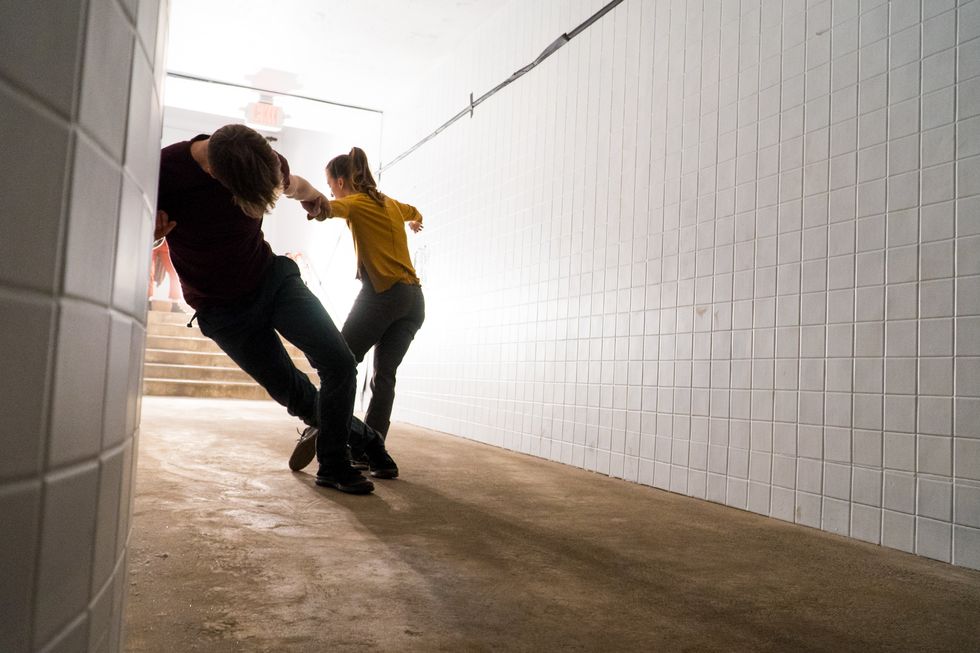
Photo by Zachary Handler, courtesy of OGD
Elements of the process they forged while making that first duet have stayed with them. “The first time we meet in the studio for an OGD creative process, Matt and Colette come with a list of words that they feel captures the tone and texture of the new work,” says Robin Neveu Brown, who was in their undergrad work and has performed with OGD since 2015. From the words, individual choreography is crafted that will then be manipulated through a series of experiments. “Within the creative process, Colette is often more left-brained, handling choreographic details, crafting long movement sequences, setting count structure and generally managing logistics. Matt tends to function as the right half of the OGD brain and communicates in images and textures, making choreographic choices related to energy and space.” Outside the studio, Krogol manages the schedule, while Reeves tackles editing and design work.
In 2014, the pair relocated to the DC area to attend the University of Maryland and became embedded in the dance scene there. They were recruited by George Washington University to teach, following the completion of their MFAs. “We have been fortunate thus far that when one of us is considered or recruited for an opportunity, it is difficult for our employers not to be enticed by the potential of having both our skill sets,” says Krogol. “I think as we have prioritized OGD as the vessel for our creative work, it has helped to establish the strength of our artistic and teaching partnership.” While they still work with collaborators who are now mostly spread between NYC, DC and L.A., a new group has coalesced around them, including a new sound designer, projection designers, costume designer and four to eight performers, who have loyally returned project after project.
In addition to teaching advanced modern and postmodern at GWU, they have been casting a wide net with their OGD projects, including a project at Dupont Underground and, this past March, a new evening-length work with original music composition and production design at the Kennedy Center. As their OGD calendar expands from project-based work toward yearly seasons, a growing need to build a capital campaign to fund it all has become more pressing.
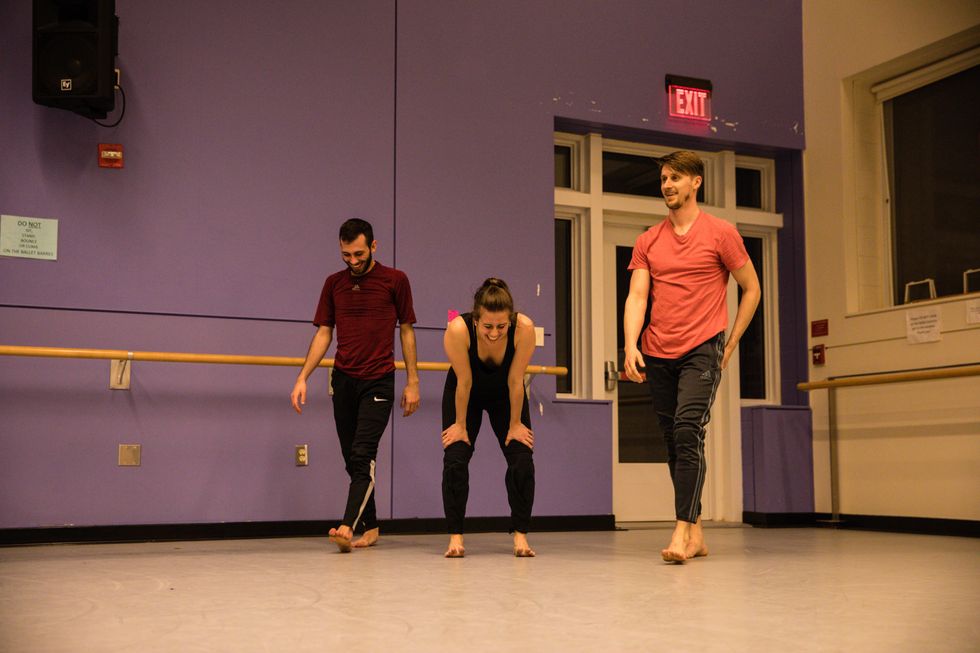
Photo by Jonathan Hsu, courtesy of OGD
“Teaching can be exhausting, but it reenergizes me, and I leave inspired for more,” says the high-energy Krogol. Each day is a grind, starting early and ending late, but working with BA students keeps them fresh as artists. “I started to see in grad school how teaching affects our research interests,” says Reeves. “Your ability to be your best teacher translates into rehearsals, talk-backs and the ability to translate an idea.” While the couple does hope to have a family one day, at the moment their hands are full with all of the costumes, props, marley floor, ladders, suitcases and dancers, who fill up their home before and after performances.
Do they sleep? The short answer is yes, but perhaps only to dream. Because, of course, when you love your work, and work with the person you love, sharing and analyzing those dreams with each other is simply another entry point into the creative process and a new project.

